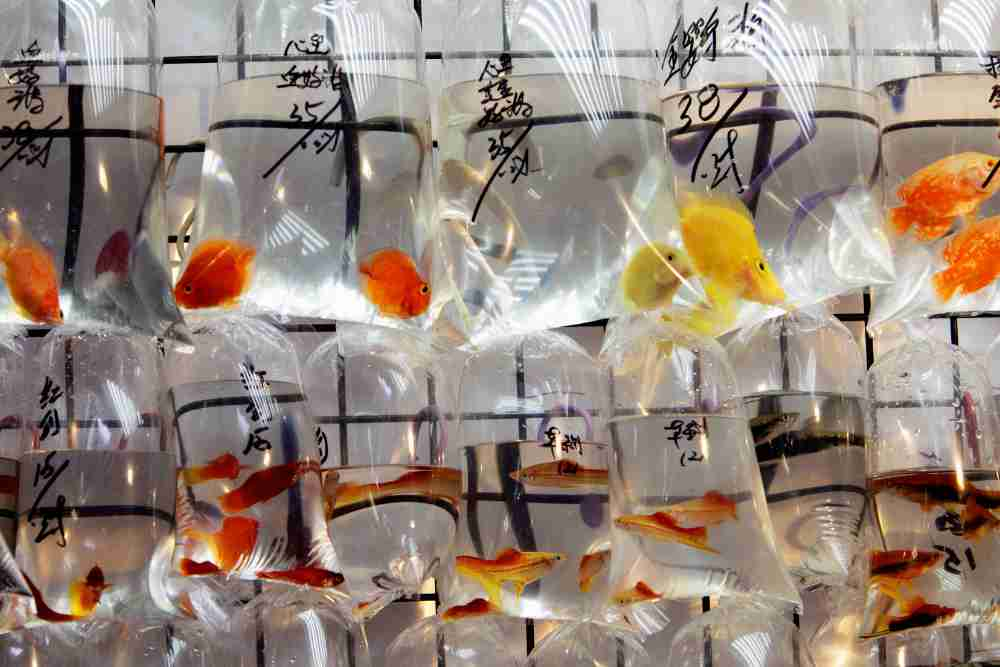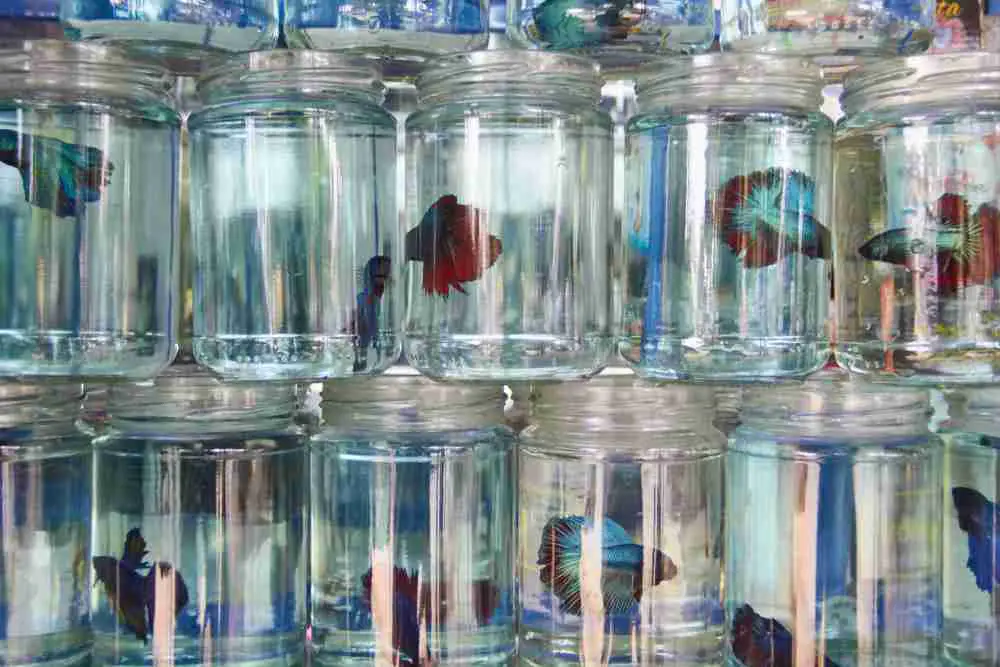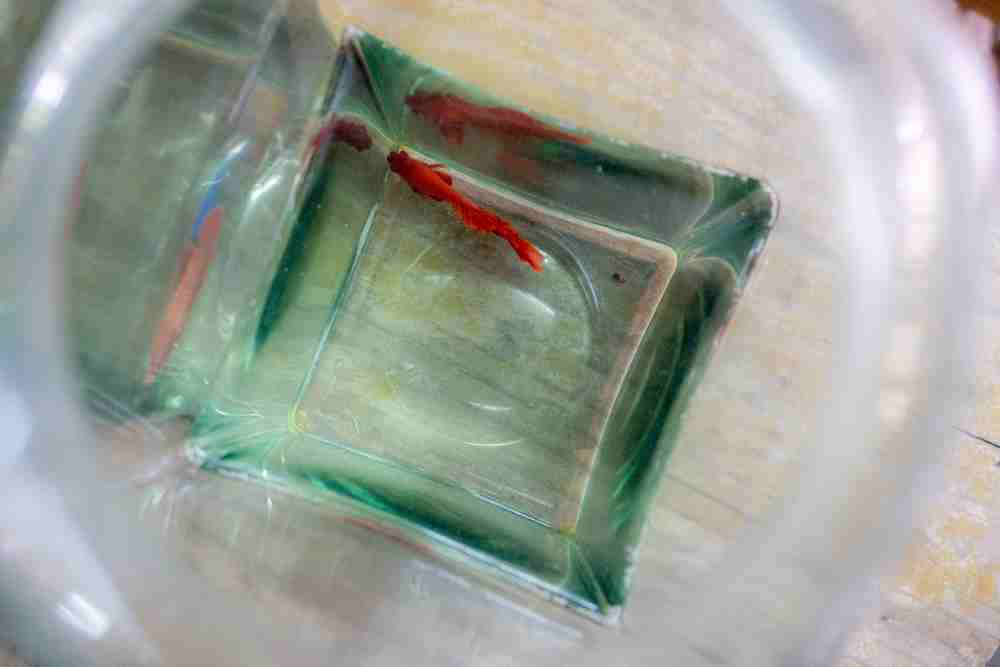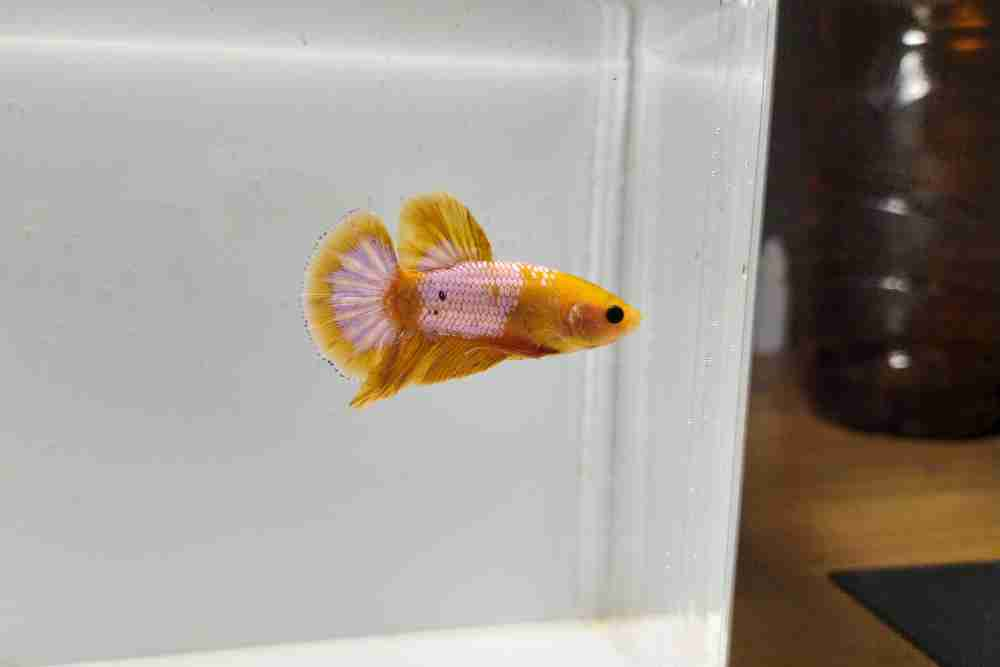Whether you are moving to a new home, taking your Betta fish to the vet, or transporting it for any other reason, it’s essential to ensure its safety and well-being during the journey.
To transport a Betta fish, place it in a small, secure container with water and keep it in a stable, temperature-controlled environment.
This article will provide you with helpful tips on how to transport a Betta fish safely in car, airplane or any other vehicles without causing any harm or stress.
By following these simple guidelines, you can make the journey as smooth as possible for your Betta fish and ensure its safe arrival at its destination.

Transports Used For Live Fish Transportation
Transporting fish, especially in the context of the fishing industry or the aquarium trade, requires specialized vehicles to ensure the fish’s safety and quality.
Here are some common types of fish transportation vehicles:
Live Fish Transport Trucks
These are specialized vehicles designed for transporting large quantities of live fish, often used in the commercial fishing industry.
They are equipped with large water tanks, aeration systems, and temperature control to maintain optimal conditions for the fish during transit.
Aqua Vans
Aqua vans are smaller vehicles used for transporting live fish over shorter distances.
They are often used by fish farms, hatcheries, and pet stores to move fish from one location to another.
Aqua vans typically have water tanks, oxygenation systems, and temperature control to keep the fish healthy.
Fish Tank Trailers
These are trailers attached to trucks or other vehicles, equipped with large, custom-made fish tanks. They are commonly used to transport fish to aquariums, pet stores, or for aquatic exhibits.
Fish tank trailers may have advanced filtration and life support systems to ensure water quality during transit.
Fish Containers on Refrigerated Trucks
For transporting fish over longer distances, refrigerated trucks equipped with specialized fish containers may be used.
These containers maintain the desired temperature and humidity levels to keep the fish fresh and of high quality.
Fish Shipping Boxes
Smaller fish, such as ornamental or aquarium fish, are often transported in insulated shipping boxes. These boxes are equipped with heat packs or cooling packs, depending on the fish’s temperature requirements.
They also contain bags filled with oxygen to ensure the fish have sufficient air during transit.
Fish Totes and Bins
In commercial fishing, fish are often transported in plastic totes or bins filled with ice to keep them fresh.
These containers are stacked on fishing vessels and then transferred to processing plants or distribution centers.
Custom-Built Aquarium Transport Vehicles
For transporting large and delicate marine creatures, such as sharks, dolphins, or sea turtles, custom-built vehicles and containers with advanced life support systems are used.
These vehicles are designed to replicate the animals’ natural aquatic environment during transport.
Supplies For Transporting Betta Fish
Transporting betta fish safely requires careful planning and the right supplies to ensure their well-being during the journey. Here’s a list of supplies you’ll need:
Transport Container: Choose a small, sturdy container with a lid. You can use a plastic or glass container, but it should be clean and free from any contaminants. A small plastic fish bag can also work.
Water Conditioner: To ensure the water quality remains stable, use a water conditioner that removes chlorine and chloramines. This will help reduce stress on the fish.
Net: A small fish net is handy for gently transferring the betta fish from its tank to the transport container.
Siphon or Gravel Vacuum: You may need this tool to remove uneaten food and waste from the transport container if the journey is long.
Water: Use water from the betta’s original tank. Do not use water from a new source to avoid shocking the fish.
Thermometer: A small thermometer will help you monitor the water temperature to ensure it stays within the betta’s comfort range (around 78-80°F or 25-27°C).
Heater (if needed): If you are transporting the betta in cold weather, consider using a small, adjustable heater to maintain the water temperature in the container.
Insulated Container or Styrofoam Cooler: Choosing the right container is crucial in this process. If the weather is extreme, use an insulated container or a Styrofoam cooler to help regulate the temperature inside the transport container.
A suitable container should be leak-proof and have a secure lid to prevent any escape. Consider using a small plastic bag or a fish transport bag that is specifically designed for this purpose.
Air Pump and Air Stone (optional): For long journeys, an air pump and air stone can help maintain oxygen levels in the water. Make sure to secure them properly to avoid stressing the fish.
Rubber Bands or Twist Ties: These can be used to secure the lid of the transport container to prevent accidental spills or escapes.
Paper Towels or Newspaper: Place a layer of paper towels or newspaper at the bottom of the container to provide some cushioning and to absorb any spills.
Dark Towel or Blanket: Cover the transport container with a dark towel or blanket to reduce stress for the betta. Betta fish are less stressed in a dark or dim environment during transport.
How To Transport A Betta Fish? (Step By Step Guide)

1. Prepare the Transport Container
Fill the container with water from the betta’s original tank, leaving some space at the top to prevent spills during the journey.
Add the appropriate amount of water conditioner to remove chlorine and chloramines. Use the thermometer to ensure the water temperature matches the betta’s comfort range (around 78-80°F or 25-27°C).
2. Acclimate the Betta
Use a small net to gently transfer the betta fish from its tank to the transport container.
Allow the fish to acclimate by adding small amounts of water from its tank to the transport container over a period of time, about 15-20 minutes. This helps the fish adjust to the new water conditions.
3. Secure the Lid
Seal the transport container with a lid and secure it using rubber bands or twist ties to prevent any accidental openings.
4. Prepare for the Journey
Place the transport container in a stable, flat position inside your car. Make sure it won’t tip over or slide during the drive.
5. Maintain a Stable Temperature
If it’s too hot or cold outside, use the insulated container or Styrofoam cooler to help regulate the temperature inside the transport container. If necessary, use the heater to maintain the correct water temperature.
6. Cover with a Dark Towel or Blanket
To reduce stress, cover the transport container with a dark towel or blanket. This will create a dim environment for the betta during the journey.
7. Monitor the Betta
While driving, periodically check on the betta to ensure it’s doing well. Make sure the water temperature remains stable, and there are no signs of distress.
8. Arrival and Setup
When you reach your destination, carefully transfer the betta fish back into its original tank. Use the acclimation process again to introduce it to the tank water gradually.
How To Transport A Betta Fish In A Car?

Transporting a Betta Fish by car requires taking necessary precautions to ensure the safety and well-being of the fish. It’s also vital to minimize stress by keeping the car ride as quiet and peaceful as possible.
By following these guidelines, you can transport your Betta Fish safely and comfortably.
Proper Placement in Car: This can be achieved by placing the container in a padded box or securing it in a seatbelt.
Avoid Sudden Movement: Avoid sudden movements and sharp turns that may cause the container to tip over.
Maintain Consistent Temperature: Additionally, make sure to keep the Betta Fish container at a consistent temperature by placing it in a cooler or using a small portable aquarium heater.
Drive Carefully: Drive as smoothly as possible to minimize stress on the betta fish. Avoid sudden stops and sharp turns.
How To Transport Betta Fish on Airplane?
Check Airline Regulations: Before you travel, check with your airline for specific regulations regarding transporting fish. Different airlines may have varying rules and fees.
Prepare the Transport Container: Fill the container with water from the betta’s original tank, leaving some space at the top to prevent spills.
Ensure the water temperature matches the betta’s comfort range. Add the appropriate amount of water conditioner to remove chlorine and chloramines.
Acclimate the Betta: Gently transfer the betta fish from its tank to the transport container using a small net. Allow the fish to acclimate by adding small amounts of water from its tank to the transport container over about 15-20 minutes.
Secure the Lid: Seal the transport container with a secure, leak-proof lid. Ensure it is tightly closed and will not open during the flight.
Pack Carefully: Place the container in a sealed plastic bag and wrap it in paper towels or newspaper to insulate it. Place the insulated container or Styrofoam cooler inside your carry-on bag to further regulate the temperature.
Pass Through Security: Inform the TSA officer that you have a live fish in your carry-on bag when you go through security. They may need to inspect the container separately. Be prepared for additional screening.
Onboard the Plane: Keep the container with you in the cabin of the airplane, not in checked luggage. Place it under the seat in front of you or in the overhead compartment, making sure it is secure and won’t tip over during turbulence.
During the Flight: Keep an eye on the betta fish and monitor the water temperature. If you have an air pump and air stone, use them to maintain oxygen levels.
Arrival and Setup: Once you reach your destination, carefully transfer the betta fish back into its original tank. Use the acclimation process again to introduce it to the tank water gradually.
Tips for Transportation a Betta Fish
1. Cleaning The Container Before Putting Betta Fish

To ensure the safety and well-being of your betta fish during transportation, follow these guidelines for cleaning the container.
- Firstly, empty and rinse the container thoroughly to remove any dirt or debris.
- Secondly, use a mild soap or aquarium cleaner to clean the container, ensuring it is free from any harmful chemicals.
- Thirdly, rinse the container several times with clean water to eliminate any trace of soap or cleaner.
- Fourthly, let the container air dry completely to prevent bacterial growth.
- Fifthly, avoid using any harsh cleaning agents that could harm the betta fish.
- Lastly, before transporting the fish, ensure the water conditions in the container are suitable, with the appropriate temperature and pH level.
2. Adjusting The Water Temperature
Transporting a Betta fish can be a delicate process, and one crucial aspect is adjusting the water temperature.
- To ensure a smooth acclimation, it’s important to follow a proper temperature acclimation process.
- First, ensure that the water in the fish’s new environment matches the temperature of its current tank.
- Gradually adjust the water temperature by adding small amounts of water from the new environment to the fish’s bag or container.
- This will help the Betta fish acclimate to the temperature change slowly. Avoid sudden temperature fluctuations, as they can stress the fish and lead to health issues.
- Maintain a stable temperature throughout the journey, using insulated containers or adding heat packs in colder climates.
3. Betta Fish Feeding Before Transportation
Transporting a Betta Fish requires careful attention to their feeding schedule. Timing and portion control are crucial when feeding your Betta Fish before transportation.
It’s important to ensure they have their last meal at the right time, so they don’t go hungry during the journey.
Choose appropriate food that is easy to digest and won’t create a mess in the transportation container.
Avoid overfeeding, as this can lead to an upset stomach and water quality issues.
By providing the right amount of food, you can help your Betta Fish stay comfortable and stress-free during the trip.
Keep in mind that a well-fed Betta Fish is more likely to stay healthy and adapt better to their new environment.
4. Securing The Betta Fish Container
Transporting a Betta fish can be a delicate task, and ensuring the container is secure is essential.
- Make sure the lid is tightly sealed to prevent any accidental openings during transportation.
- Additionally, check for any cracks or holes in the container that may cause water leakage.
- Avoid sudden movements that could create unnecessary stress for the fish.
- Keeping the water as calm and still as possible during transport will help reduce the chances of injury or discomfort.
- Cushion the fish with a soft material in the container to minimize stress during transit. Proper labeling is necessary too.
- Clearly mark the package as fragile and include instructions for handling. Additionally, include contact information in case any issues arise.
5. Acclimating the Betta Fish To The New Environment
When transporting a Betta fish to a new environment, it’s crucial to acclimate them gradually.
- This process helps the fish adjust to the water conditions in their new tank, ensuring their well-being.
- Start by placing the fish in a bag with the water they are familiar with and float it in the new tank.
- Every 15 minutes, add a little bit of water from the tank into the bag, allowing the Betta to gradually adapt to the new water parameters.
- Make sure to monitor and adjust the temperature and pH levels of the water as needed to ensure a smooth transition.
6. Health And Stress Management After Transportation
It is important to recognize signs of stress in a betta fish to ensure its health and well-being after transportation.
Look out for physical indications such as sluggishness, loss of appetite, or color fading.
Behavioral changes like excessive hiding, darting movements, or gasping for air can also signify stress.
To reduce stress and promote overall well-being, follow these steps:
- Firstly, acclimate the fish to its new environment gradually and maintain a stable water temperature.
- Secondly, provide a comfortable and spacious container with clean, conditioned water for the journey.
- Thirdly, minimize external disturbances by keeping the container in a secure, dark place.
- Lastly, avoid sudden movements or loud noises during transportation.
FAQs
Are Betta Fish Easy To Transport?
Betta fish are known for their hardiness, making them relatively easy to transport. However, it is still important to take certain precautions to ensure their safety and minimize stress during the journey.
Use a small, sturdy plastic or glass container with a lid to keep them secure. Fill the container with water from their regular tank, making sure to leave enough space for air.
Can A Betta Fish Survive A Car Ride?
Yes, a betta fish can survive a car ride if it is transported in a secure container with proper conditions.
How Long Can A Betta Fish Stay In A Bag?
A betta fish can stay in a bag for up to 24 hours if properly cared for.